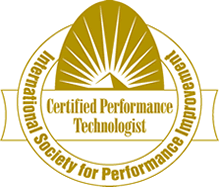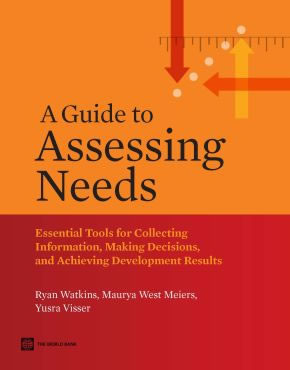| APRIL
2012 |
| Volume
11, Number 2 |
 |
CONTACT
HSA |
|
To contact us, click HERE.
|
 |
PUBLICATIONS |
|
For more information on our best-selling, award-winning books,
click HERE.
Need help with HPT terminology? Click HERE
for The HSA HPT Lexicon.
Click HERE
to read our published articles.
|
 |
ASK
HAROLD |
|
Click HERE
to read the latest Ask Harold question and Harold's response
or ask a question of your own!
|

|
UPCOMING
EVENTS |
|
April 12 & 13, 2012
CSTD Symposium, Montreal, Canada
April 18-23, 2012
ISPI Conference, Toronto, Canada
July 16 & 17, 2012
ASTD Telling Ain't Training Mini-Conference, Chicago, IL
September 20 & 21,
2012
ASTD Telling Ain't Training Mini-Conference, Atlanta, GA
October 15 & 16,
2012
ASTD Telling Ain't Training Mini-Conference, Dallas, TX
November 5 & 6,
2012
ASTD Telling Ain't Training Mini-Conference, Washington, DC
For details about these events, click HERE
To learn more about engaging Harold Stolovitch to speak at
your organization, click HERE
|
 |
CPT
DESIGNATION |
|
Harold Stolovitch and Erica Keeps are Certified Performance
Technologists (CPT). The CPT designation is awarded by the
International Society for Performance Improvement (ISPI) to
experienced practitioners in the field of organizational performance
improvement, whose work meets both the performance-based Standards
of Performance Technology and application requirements. For
more information, visit www.CertifiedPT.org.
|
 |
|
Technology
and Learning
 Humanity
and technology have been intertwined since the thumb and forefinger
found one another. Early in our prehistory, humans found ways not
only to create tools, but to represent their world, their issues
and their beliefs using available technological artifacts. Charcoal,
animal blood, plant dyes and mineral pigments became important means
for expressing ideas, explaining events and augmenting limited vocabularies.
In addition to artistic displays on cave walls, early humans adopted
music, dance and costumes to increase the immediacy and realism
of what they were sharing. They employed these means to heighten
excitement and even manipulate emotions of joy, sorrow, anger or
fear. The costumes, simulations of weapons, organization of space
and inclusion of natural elements such as smoke, fire and mood enhancing
chemicals (for example, peyote, hemp, mushrooms and alcohol) all
contributed to increase the impact of their messages. Humanity
and technology have been intertwined since the thumb and forefinger
found one another. Early in our prehistory, humans found ways not
only to create tools, but to represent their world, their issues
and their beliefs using available technological artifacts. Charcoal,
animal blood, plant dyes and mineral pigments became important means
for expressing ideas, explaining events and augmenting limited vocabularies.
In addition to artistic displays on cave walls, early humans adopted
music, dance and costumes to increase the immediacy and realism
of what they were sharing. They employed these means to heighten
excitement and even manipulate emotions of joy, sorrow, anger or
fear. The costumes, simulations of weapons, organization of space
and inclusion of natural elements such as smoke, fire and mood enhancing
chemicals (for example, peyote, hemp, mushrooms and alcohol) all
contributed to increase the impact of their messages.
Hence, it is not a giant leap from these early uses of media and
technology to those of today - photographs, films, television, computers,
3-D and virtual reality - to enrich communications and, of course,
learning. Technology, throughout human history, has played a dual
role of both fascination and support. It has helped enhance our
lives in almost every sphere: health, food, transportation and shelter.
It has also displayed a much darker side of dispensing pollution
and death.
We professionals in workplace learning turn to technology to help
make the acquisition of desired skills and knowledge more efficient,
more accessible and certainly more impactful. So long as we use
it wisely, technology can be a productive partner in our quests.
However, let us never forget that technology can be a seductive
force of destruction. Let us continue our history of using technology
to make learning meaningful, engaging and effective. Let us also
be on guard against overdependence on technology that, if left unchecked,
has the potential to overwhelm - even crush - that which we value.
All the best,
Harold & Erica
|
A
Wonderful FREE Gift For You
 Dr.
Ryan Watkins, Associate Professor, George Washington University,
along with Maurya West Meiers and Dr. Yusra Laila Visser,
has written a wonderful book entitled A Guide to Assessing
Needs, published by the World Bank. Click HERE
to access two excerpts from the book. They describe its approach,
structure and contents, and introduce you to their needs assessment
tools. Dr.
Ryan Watkins, Associate Professor, George Washington University,
along with Maurya West Meiers and Dr. Yusra Laila Visser,
has written a wonderful book entitled A Guide to Assessing
Needs, published by the World Bank. Click HERE
to access two excerpts from the book. They describe its approach,
structure and contents, and introduce you to their needs assessment
tools.
A FREE online or PDF version
of the book can be accessed at www.GapsInResults.com.
|
|
Stop
Wasting Money on Training

The amount of money organizations invest in training escalates
each year. Since 1991, annual training budgets in the US have
grown from $43.2 to $125 billion, a whopping 290% increase!
This pattern is found worldwide.
Isn't it time that we asked ourselves:
- Are organizations getting value for their dollars spent?
- Is training doing what it should?
- What's the return-on-investment (ROI)?
Want to find out how? Click HERE
to learn more.
|
| |
|


 Humanity
and technology have been intertwined since the thumb and forefinger
found one another. Early in our prehistory, humans found ways not
only to create tools, but to represent their world, their issues
and their beliefs using available technological artifacts. Charcoal,
animal blood, plant dyes and mineral pigments became important means
for expressing ideas, explaining events and augmenting limited vocabularies.
In addition to artistic displays on cave walls, early humans adopted
music, dance and costumes to increase the immediacy and realism
of what they were sharing. They employed these means to heighten
excitement and even manipulate emotions of joy, sorrow, anger or
fear. The costumes, simulations of weapons, organization of space
and inclusion of natural elements such as smoke, fire and mood enhancing
chemicals (for example, peyote, hemp, mushrooms and alcohol) all
contributed to increase the impact of their messages.
Humanity
and technology have been intertwined since the thumb and forefinger
found one another. Early in our prehistory, humans found ways not
only to create tools, but to represent their world, their issues
and their beliefs using available technological artifacts. Charcoal,
animal blood, plant dyes and mineral pigments became important means
for expressing ideas, explaining events and augmenting limited vocabularies.
In addition to artistic displays on cave walls, early humans adopted
music, dance and costumes to increase the immediacy and realism
of what they were sharing. They employed these means to heighten
excitement and even manipulate emotions of joy, sorrow, anger or
fear. The costumes, simulations of weapons, organization of space
and inclusion of natural elements such as smoke, fire and mood enhancing
chemicals (for example, peyote, hemp, mushrooms and alcohol) all
contributed to increase the impact of their messages. Dr.
Ryan Watkins, Associate Professor, George Washington University,
along with Maurya West Meiers and Dr. Yusra Laila Visser,
has written a wonderful book entitled A Guide to Assessing
Needs, published by the World Bank. Click
Dr.
Ryan Watkins, Associate Professor, George Washington University,
along with Maurya West Meiers and Dr. Yusra Laila Visser,
has written a wonderful book entitled A Guide to Assessing
Needs, published by the World Bank. Click 
